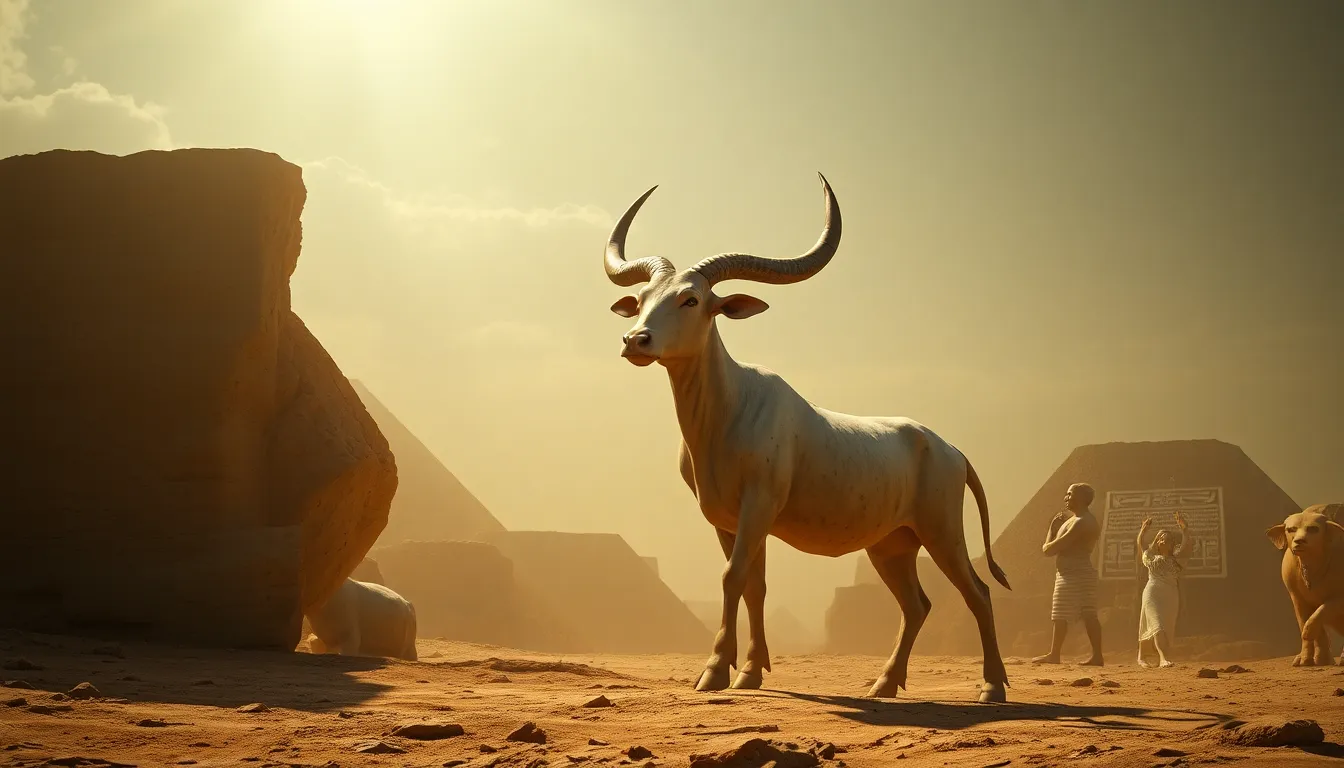The Sacred Cow: Hathor and the Origins of Motherhood
I. Introduction
The term “sacred cow” often symbolizes something that is revered and protected from criticism. In various cultures, this notion extends to symbols of motherhood and nurturing. In ancient Egyptian mythology, one of the most venerated figures embodying these ideals is Hathor, the goddess of love, beauty, and motherhood. This article explores the significance of Hathor and her deep connections to the concept of motherhood, illustrating her importance in ancient cultures.
II. Who is Hathor?
Hathor, one of the most important deities in the ancient Egyptian pantheon, is often depicted as a cow or a woman with cow horns. She represents several attributes and has a rich symbolic presence:
- Goddess of Love and Beauty: Hathor is frequently associated with joy, music, and dance, making her a central figure in celebrations and festivities.
- Fertility and Motherhood: As a nurturer, she is linked to childbirth and the protection of families.
- Sky Goddess: Hathor is sometimes considered a sky goddess, symbolizing the heavens and the nurturing aspects of the universe.
Historically, Hathor was worshipped throughout Egypt, with her cult centers in Dendera and Memphis. Her worship reflects the deep respect the Egyptians had for motherhood and feminine qualities, which were pivotal in their society.
III. The Symbolism of Cows in Ancient Cultures
Cattle held significant importance in agrarian societies, serving as a primary source of sustenance. The symbolism of cows extends beyond mere provision:
- Nourishment: Cows are seen as providers of milk and meat, essential for survival.
- Motherhood: The maternal qualities of cows, such as nurturing their young, parallel the characteristics of a mother.
In Egyptian mythology, Hathor’s association with cows emphasizes her role as a nurturing mother, symbolizing fertility and abundance. The image of Hathor as a cow reinforces these ideals, making her a quintessential figure of motherhood.
IV. The Mythology of Hathor
Hathor is surrounded by numerous myths that highlight her dual nature as both a nurturing figure and a fierce protector. Some key stories include:
- The Return of the Eye of Ra: In this myth, Hathor transforms into the fierce lioness Sekhmet to protect the sun god Ra, showcasing her protective instincts.
- The Birth of Horus: Hathor plays a crucial role in the birth of Horus, symbolizing her connection to motherhood and the continuation of life.
In art, Hathor is often depicted in vibrant colors with musical instruments or surrounded by symbols of fertility. Her imagery in temples and tombs reflects her integral role in ancient Egyptian life, emphasizing both her nurturing and protective qualities.
V. Hathor’s Influence on Concepts of Motherhood
Hathor embodies the ideals of motherhood within ancient Egyptian culture through various facets:
- Childbirth and Family Life: As a goddess who protects mothers and children, Hathor was invoked during childbirth for safe delivery and maternal health.
- Comparison to Other Maternal Figures: Similar to figures like Demeter in Greek mythology and Isis in Egyptian lore, Hathor represents the nurturing and protective aspects of motherhood.
Her influence on motherhood is profound, showcasing the universal reverence for maternal figures across different cultures and eras.
VI. Rituals and Worship of Hathor
The worship of Hathor involved various rituals and festivals that celebrated her qualities:
- Rituals: Offerings of music, dance, and food were common in temples dedicated to Hathor, as she was believed to bring joy and fertility.
- Festivals: The Dendera Festival, celebrating Hathor, involved music, dance, and communal feasting, reflecting the happiness she brought to her worshippers.
Temples dedicated to Hathor were important centers of worship, where devotees sought her blessings for fertility and motherhood, reinforcing her status as a sacred mother.
VII. The Legacy of Hathor in Modern Culture
Hathor’s influence extends beyond ancient Egypt into modern culture:
- Contemporary Views: Hathor’s image has shaped modern perceptions of motherhood, symbolizing love, care, and protection.
- Representation in Art and Literature: Artists and writers continue to draw inspiration from Hathor, depicting her as a symbol of nurturing femininity and maternal strength.
Her legacy remains relevant today, as societies still grapple with the ideals of motherhood and the sacredness associated with maternal figures.
VIII. Conclusion
In summary, Hathor stands as a significant figure in the context of motherhood within ancient Egyptian mythology. Her attributes and the myths surrounding her highlight the cultural importance placed on maternal figures throughout history. As we reflect on the legacy of figures like Hathor, it becomes clear that the reverence for motherhood is a universal theme that transcends time and culture. The ideals she represents continue to shape our modern perceptions of motherhood, reminding us of the enduring power of the sacred feminine.




